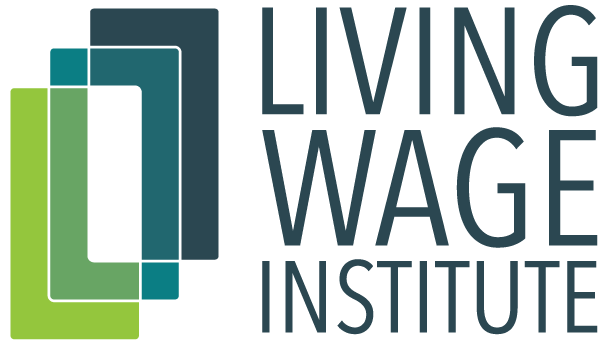The situation in the UP: 1.5% of cases, 54% of the land, and a disproportionate amount of the burden
While most COVID cases around the country are in major cities, rural areas such as the counties of Michigan's Upper Peninsula (UP) are not immune to the ill-effects of the viruses' spread and are arguably more adversely affected, financially and health-wise. As of June 17, the UP has had only 130 confirmed cases, a relatively low infection rate for a region with a population of over 300,000 individuals (1). Since the total number of ICU beds and ventilators in the UP are 59 and 95 respectively, these low numbers bode well for these hospitals' carrying capacity (2). Unfortunately, most of the UP's economy relies on the summer season when people flock from around the Midwest to relax in the UP sun (3). As Michigan begins to lift its stay at home order, the number of cases in the UP might increase exponentially.
As Peninsula residents, wait for the proverbial shoe to drop in terms of COVID cases, they are also facing the more economically significant impact of job losses and employment displacement since the economic shutdown. The UP is probably considered "off the map" due to its low number of COVID cases. Still, a closer look at its job base, changing unemployment, and level of pre-existing poverty— all of which are indicators of high vulnerability to the economic impact of COVID— underscores that even remote locations are unable to escape the jaws of this deadly virus.
The first measure of vulnerability is the job base in the UP. Tourism accounts for over 43% of jobs. More often than not, the small businesses and tourist attractions on which UP residents rely only manage to break even each year, therefore a year with a decreased number of tourists can be fatal. For them, losing the summer essentially means losing the entire year. In a survey sent a month ago by InvestUp and Michigan works, 90 out of 332 businesses have closed, and 160 believe that they won't make it through the end of the year (4). Unsurprisingly, according to the Radio Results Network, the UP's unemployment rate increased to 20.3% in April, up from 5.4% in March, and the UP went from an estimated 126,500 jobs down to 104,400 (5). Substantial job cuts occurred in all industries, with the largest observed in the leisure and hospitality sector (-225,000 jobs) (5). Even the added support of PUA (Pandemic unemployment Assistance) and State Unemployment Insurance seems insufficient to help residents cope with their needs. Also, if it were the case that unemployment benefits were sufficient for everyone in need, Michigan's unemployment system proves unable to keep up with the rising number of claims. Therefore, thousands of individuals are unable to receive their benefits (6).
The UP also has relatively high pre-existing conditions of poverty compared with the rest of the US. For example, the US poverty rate is 11.8% as of 2018, while the poverty rate in the UP is 14.7%, which is 24.6% higher than the US poverty rate (7,8). Furthermore, when you look at the percentage of households living below the ALICE threshold, there is an even larger population of the UP struggling to get through each day. ALICE is a tool developed by the United Way and stands for Asset Limited, Income Constrained, Employed. According to United Way, "ALICE is a way to get a snapshot of the working poor, a group in society that lives above the poverty line, but makes insufficient income to cover their basic costs (9). This indicator measures economic well-being at the household level." The percentage of people in each county living below the ALICE poverty threshold is between 25%-43%: the average rate is 30.3% (8). For a fuller picture of the percent of people who are financially living on the edge, if percent ALICE and the percent below poverty are added together, the total percentage of the UP population living on the financial edge is 45%. While national ALICE percentages are not available for the US, seeing as almost one in two households struggled to make ends meet before COVID, it is entirely plausible to assume this number has increased significantly. The ALICE threshold for Michigan is calculated very similarly to the Living Wages tool and both methods estimate the necessary annual pre-tax wages to be $21,036 and 23,616 for a single adult and $61,272 and $66,412 for two adults with two children (10,11).
These critical indicators of the job base, changing unemployment, and pre-existing poverty suggest areas such as the Upper Peninsula region of Michigan warrant more attention. Citizens of the UP are some of the most vulnerable to the economic and health-related effects of COVID, and we need to start taking note of that.
Sources:
- https://www.uppermichiganssource.com/content/news/List-of-reported-COVID-19-positive-cases-in-Upper-Michigan-569246041.html Date Accessed 06-18-2020
- https://www.bridgemi.com/michigan-government/few-coronavirus-cases-lots-land-should-northern-michigan-reopen Date Accessed 06-18-2020
- https://www.bridgemi.com/business-watch/coronavirus-has-spared-keweenaw-peninsula-may-kill-summer-tourism Date Accessed 06-22-2020
- https://www.miningjournal.net/news/front-page-news/2020/05/nmu%E2%80%88providing-emergency-grants-funds-are-part-of-cares-act/ Date Accessed 06-20-2020
- https://www.radioresultsnetwork.com/2020/05/29/180021/ Date Accessed 06-17-2020
- https://www.detroitnews.com/story/opinion/2020/04/24/opinion-fix-broken-unemployment-system/3011082001/ Date Accessed: 06-24-2020
- https://www.census.gov/library/publications/2019/demo/p60-266.html Date Accessed 06-17-2020
- https://poverty.umich.edu/data-tools-poverty-and-well-being-map-2020/ Date Accessed 06-18-2020
- https://www.unitedforalice.org/methodology Date Accessed: 06-24-2020
- https://livingwage.mit.edu/states/26
- https://www.unitedforalice.org/michigan
Biography: Isy Osubor is a rising senior at MIT from Nigeria studying Mechanical Engineering with a double minor in Literature and Business Management. On-campus, she is part of the dance team Sakata Afrique and is head of Recruitment for her sorority, Kappa Alpha Theta. In the future, she hopes to work in impact investing with a focus on the African continent.



